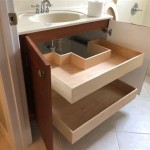How To Pick a Bathroom Lock With Bobby Pins
The ability to bypass a locked door, especially in emergency situations, can be a practical skill. One common method involves utilizing readily available tools like bobby pins. This article provides a comprehensive overview of how to pick a standard bathroom lock with bobby pins. It is crucial to emphasize that this information is intended for situations where there is a legitimate need to gain entry, such as accidentally locking oneself out or assisting someone in distress. Using this technique for illegal or unethical purposes is strongly discouraged.
Standard bathroom locks, often referred to as privacy locks, are relatively simple locking mechanisms. They usually consist of a spring-loaded latch that engages with a strike plate on the doorframe. The lock itself often features a simple button or twist knob on the inside and a small hole on the outside, designed for emergency access. Picking these locks with bobby pins relies on understanding the basic mechanics of the lock and using the pins to manipulate the internal components.
Before attempting to pick the lock, it is essential to gather the necessary tools and prepare them properly. Two bobby pins are required for this task. One will serve as a tension wrench, applying pressure to the lock cylinder, while the other will act as the pick, used to manipulate the pins within the lock.
Preparing the Bobby Pins
The first step is to prepare the bobby pins for their respective roles. Transforming the bobby pins into effective lock-picking tools does require some alterations to their original form. This modification allows for better manipulation and application of force within the lock cylinder.
The bobby pin intended for use as the tension wrench needs to be bent into an "L" shape. To achieve this, locate the closed end of the bobby pin and carefully bend it at a 90-degree angle. The length of the bent section should be approximately a quarter to a third of the total length of the bobby pin. This bent section will be inserted into the keyway and used to apply rotational pressure, which is crucial for successfully picking the lock. Ensure that the bend is clean and relatively sharp to provide a good grip within the lock cylinder.
The bobby pin designated as the pick requires a different type of modification. The goal is to create a slight curve or hook at the tip of the bobby pin. This curve will be used to lift the individual pins inside the lock cylinder. To create this curve, use pliers or a similar tool to gently bend the tip of the bobby pin upwards. The curve should be subtle, not a sharp bend. A slight hook is sufficient to engage with the pins and lift them individually. Avoid making the curve too aggressive, as this could damage the lock mechanism or make it difficult to maneuver the pick inside the cylinder. After bending, ensure the tip is smooth and free of any rough edges that could hinder its movement within the lock.
Once the bobby pins are properly prepared, the next step is to understand the lock mechanism and locate the keyway. The keyway is the slot into which a key would normally be inserted. In the case of a bathroom lock, this might be a small, circular hole on the outside of the door. Identifying the keyway is essential for inserting the tools and beginning the picking process.
Applying Tension and Manipulating the Pins
With the bobby pins prepared and the keyway identified, the actual lock-picking process can begin. This process involves two simultaneous actions: applying tension to the lock cylinder and manipulating the pins within the cylinder.
Insert the L-shaped bobby pin (the tension wrench) into the bottom of the keyway. Apply a gentle turning pressure in the direction that the lock would normally turn to open the door. It is important to apply steady and consistent pressure, but not excessive force. The goal is to create a slight bind on the pins within the lock cylinder, which will allow them to be manipulated individually. Experiment with the amount of pressure applied; too little pressure will not bind the pins, while too much pressure can make them difficult to lift. The correct amount of tension is crucial for successful lock picking.
While maintaining tension on the tension wrench, insert the curved bobby pin (the pick) into the top of the keyway. Use the pick to gently probe and feel for the individual pins inside the lock cylinder. These pins are small, spring-loaded components that prevent the lock from turning freely. The goal is to lift each pin to the correct height, allowing the cylinder to rotate and the lock to open.
Begin by pressing the pick against each pin, one at a time. Apply a slight upward pressure to lift each pin individually. While lifting each pin, pay close attention to the feel and sound of the lock. When a pin is lifted to the correct height, a slight click or a feeling of movement may be detected. This indicates that the pin has been set. Continue lifting each pin in this manner until all the pins are set. As each pin is set, the lock cylinder will gradually turn further. Maintain consistent tension on the tension wrench throughout this process. Varying the tension, even slightly, can cause the pins to fall back into their original positions, requiring the process to be restarted.
It's possible that some pins might feel stuck or resistant to lifting. If this occurs, try slightly adjusting the tension applied by the tension wrench. Sometimes, a slight increase or decrease in tension can release the pin and allow it to be lifted. If a pin feels spongy or moves too easily, it may be a false set. This means the pin has been lifted to a point where it feels set, but it is not actually in the correct position. In this case, continue probing and manipulating the other pins until the correct configuration is achieved. Patience and persistence are essential for successful lock picking.
Troubleshooting Common Problems
Lock picking can be a challenging process, and it is common to encounter difficulties along the way. Understanding and addressing these common problems can significantly improve the chances of success. Several common issues include difficulty feeling the pins, oversetting the pins, and applying incorrect tension.
One common problem is difficulty feeling the pins inside the lock cylinder. This can be due to a lack of experience, inadequate lighting, or a poorly prepared pick. To improve the sense of touch, practice on different types of locks to develop familiarity with the feel of the pins. Ensure that the work area is well-lit to allow for better visual inspection of the lock and tools. The bobby pin used as a pick should have a smooth curve at the tip, free of any rough edges that could interfere with its movement. If the pins are still difficult to feel, consider using a magnifying glass to get a closer view of the lock mechanism.
Another frequent issue is oversetting the pins. This occurs when a pin is lifted too high, causing it to bind against the top of the lock cylinder. When a pin is overset, it will often feel stuck or difficult to release. To correct this, gently reduce the tension on the tension wrench, allowing the pin to fall back into its original position. Then, carefully lift the pin again, paying close attention to the feel and sound of the lock. Avoid applying excessive force when lifting the pins. A gentle, controlled approach is more likely to result in success.
Applying incorrect tension is another common source of frustration. Too little tension will not bind the pins, making it impossible to set them. Too much tension will make the pins difficult to lift and can even damage the lock mechanism. The correct amount of tension is crucial for successful lock picking. Experiment with different levels of tension to find the sweet spot. Start with a light tension and gradually increase it until the pins begin to bind. Listen for the subtle clicks and movements that indicate when a pin is set. If the pins feel too stiff or difficult to lift, try reducing the tension slightly. The key is to find a balance between applying enough tension to bind the pins and allowing them to be lifted freely.
If, after several attempts, the lock remains unpicked, it may be necessary to reassess the approach. Ensure that the bobby pins are properly prepared and that the correct amount of tension is being applied. Try starting the process over from the beginning, paying close attention to the feel and sound of the lock. If the lock is particularly difficult, it may be best to seek assistance from a professional locksmith. It is important to avoid using excessive force, as this can damage the lock mechanism and make it even more difficult to open.
Consistent practice is essential for developing proficiency in lock picking. As experience is gained, the ability to feel the pins, apply the correct amount of tension, and manipulate the lock mechanism will improve. Start with simple locks and gradually progress to more complex ones. Remember that patience and persistence are key. Lock picking is a skill that requires time and dedication to master.

How To Pick A Lock With Bobby Pin Picker Of Locks

How To Pick A Lock With Bobby Pin Guide Animations

How To Open A Locked Bathroom Door 10 Steps With Pictures

How To Pick A Lock With Bobby Pin Guide Animations

How To Pick A Door Lock With Bobby Pin

How To Open A Locked Door With Bobby Pin 11 Steps Picking Locks Pins

How To Pick A Lock With Bobby Pin Picker Of Locks

It S Easy To Pick Some Smart Deadbolts We Aren T Alarmed Wirecutter

How To Pick A Door Lock With Household Items

12 Ways To Open A Locked Bathroom Door Without Key
Related Posts







